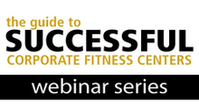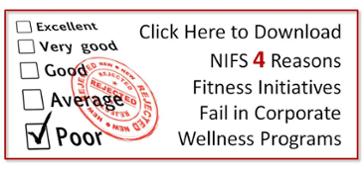 We sit. Frankly, we sit a lot. We sit at home, we sit on our commutes, we sit at work, we sit during our child’s after-school activities. Sit, sit, sit. And it’s not doing us any favors, either. In fact, recent startling statistics indicate that sitting may be a significant threat to our overall wellbeing.
We sit. Frankly, we sit a lot. We sit at home, we sit on our commutes, we sit at work, we sit during our child’s after-school activities. Sit, sit, sit. And it’s not doing us any favors, either. In fact, recent startling statistics indicate that sitting may be a significant threat to our overall wellbeing.
Before you write this off as one of those “it can’t be that bad” indicators, consider these statistics. There are even more (if you need more convincing) in this compelling infographic.
- Sitting six hours a day increases your risk of death by 40% over someone who sits less than three hours.
- Between 1980 and 2000, exercise rates remained the same, but sitting time increased 8% and obesity doubled.
- People with sitting jobs have twice the rate of cardiovascular disease as people who stand for work.
And to those of you who say that sitting disease is really a problem only for people who don’t work out, think again. Data shows that prolonged sitting can negate some of the benefits you receive from regular exercise. Let me just say it one more time: How often we sit is a problem.
NIFS’s Fit-It-In Gets Results in Combating Sitting
So there it is: sitting is our great nemesis. If you’ve been wracking your brain for strategies that actually combat the gravitational pull to a chair, look no further. Below is an outline for one of NIFS’s award-winning programs, Fit-It-In, with real results that can be implemented in any worksite health setting.
But before I get into program specifics, I need to say that if you don’t have built-in strategies for evaluating your programs, you’ll want to be sure you establish that basic infrastructure in order to determine whether your efforts at combating sitting disease are actually working. For more on how NIFS evaluates our programs, read this blog. After all, without effective evaluation strategies, you can’t get fantastic data like this: Before Fit-It-In started, 100% of associates polled indicated they were sedentary at least four hours per day. By the end of the program, only 8% of associates polled indicated that they were sedentary four or more hours per day.
In the Beginning
This conceptually simple and highly effective program, called Fit-It-In, is the brainchild of one of NIFS’s managers, Kathy Douglas. Kathy manages a corporate fitness center for NIFS at a client where there is a lot of sitting. She, like most of us in worksite health promotion, had been following the news coming out in the last few years about the dangers of sitting and felt compelled to address this for the associates she serves.
She knew that if she could just get them into the fitness center, she could help them, even with small breaks in the day, to feel better and to gradually improve their health. But she was up against (1) individual inertia, and (2) a corporate culture for productivity that kept associates in their seats.
After much research, discussion with leadership at her client location, and careful outlining of the program’s goals and objectives, she launched Fit-It-In. The primary goal of the program was to help improve associate health and engagement by providing them with an efficient and convenient method of fitting in more physical activity throughout their workday.
Fighting Inertia to Improve Employee Health
Kathy knew she had a lot of work to do to reach the 500+ associates at her location with a message about moving more, and she was certain that focusing on getting them into the fitness center was going to be met with significant resistance. So she brought exercise to the associates and incorporated a variety of simple opportunities/events through which associates could engage in movement-oriented activities without having to truly work out.
Program features included the following:
- Fitness bands to all associates
- Online workout and stretching documents
- Indoor and outdoor walking routes
- Motivational stairwell challenges
- Fitness band exercise challenge of the month
- “15-2-Fit” 15-minute workout cards available in the fitness center
- 5-Minute Flash Mob fitness band exercise events
- “YES You Can―Fit-It-In” informational kiosk
- Monthly grand-prize drawing
Pretty great list of services in the initiative, right? Well, here’s the thing: Kathy knew (she’s been with this client for five years) that unless she was able to get support from mid-level managers, this initiative would flop, no matter how creative, relevant, simple, or potentially impactful it was.
Engaging Managers to Support Employee Exercise
Truly, this is what sets this program apart from others. Kathy spent a significant amount of front-end time with managers in the organization talking with them about Fit-It-In: how it would benefit their productivity goals as well as the health of their department members. She also sought buy-in from the executive leadership in her location so that the mid-level managers would know they had the support they needed to get Fit-It-In off the ground in their division.
Easy enough. On to the next steps, right? Unfortunately, it took a lot of effort on Kathy’s part to overcome managers’ resistance to allowing their employees to move for five minutes during a meeting, or at each hourly bell. There were significant concerns in some areas about productivity and department goals being compromised because employees would not be 100% focused on work 100% of the time.
It’s a common hurdle, but it’s not commonly overcome. Kathy was able to gain a lot of traction with these supervisors by presenting Fit-It-In jointly with Human Resources. She engaged the managers in conversation at the end of the presentation to listen to their concerns and other feedback. Kathy added elements to the initiative in response to those discussions and ultimately was able to remove most of the identified barriers to generate a win-win message.
If you want to read about how Kathy was able to go from 100% of associates reporting that they were sedentary for four or more hours to just 8% indicating that they were sedentary for four or more hours each day, you won’t want to miss part 2 of this blog. We’ll dig into the data, as well as offer an overview on how the program was implemented. I’ll also outline some of our key lessons learned.
 Let me start by saying I’m not here to dog personal training. There is absolutely a niche for that fee-based service, and there is clearly a clientele for it. It should definitely remain an option in fitness centers.
Let me start by saying I’m not here to dog personal training. There is absolutely a niche for that fee-based service, and there is clearly a clientele for it. It should definitely remain an option in fitness centers.
 Need a convenient, cost-effective way to get in shape and get healthy?
Need a convenient, cost-effective way to get in shape and get healthy?


 It is a time of change and excitement. Out with the old and in with the new. Things will be bright and shiny and…different. During the short or lengthy time that your fitness center is undergoing renovations, how do you gratify your members? Having a cutting edge corporate or active aging fitness center is what everyone strives for…but if you don’t have any members waiting for the renovations to be completed, then the doors will close before they can be reopened. Keep three things in mind during your fitness center renovations to ensure that your members are knocking on your fitness center’s door the minute they are reopened: 1. Keep members active 2. Keep members interested and 3. Use what you have.
It is a time of change and excitement. Out with the old and in with the new. Things will be bright and shiny and…different. During the short or lengthy time that your fitness center is undergoing renovations, how do you gratify your members? Having a cutting edge corporate or active aging fitness center is what everyone strives for…but if you don’t have any members waiting for the renovations to be completed, then the doors will close before they can be reopened. Keep three things in mind during your fitness center renovations to ensure that your members are knocking on your fitness center’s door the minute they are reopened: 1. Keep members active 2. Keep members interested and 3. Use what you have.
 What is a tabata workout and why should you try it?
What is a tabata workout and why should you try it? In this blog series, we’re focusing on why fitness fails as part of a corporate wellness strategy. The first two truths looked at how
In this blog series, we’re focusing on why fitness fails as part of a corporate wellness strategy. The first two truths looked at how 
 Do you feel that you have to use machines or dumbbells to get a good strength workout? Well, it’s time to think outside of the box and incorporate resistance bands into your workout. In the past, bands were seen for older adults because they may not make you sore or you don’t feel they are as intense. Bands are great to throw in your bag or car while traveling because they don’t take up much space and aren’t near as heavy to carry around.
Do you feel that you have to use machines or dumbbells to get a good strength workout? Well, it’s time to think outside of the box and incorporate resistance bands into your workout. In the past, bands were seen for older adults because they may not make you sore or you don’t feel they are as intense. Bands are great to throw in your bag or car while traveling because they don’t take up much space and aren’t near as heavy to carry around. Have you heard this
Have you heard this  We sit. Frankly, we sit a lot. We sit at home, we sit on our commutes, we sit at work, we sit during our child’s after-school activities. Sit, sit, sit. And it’s not doing us any favors, either. In fact, recent startling statistics indicate that sitting may be a significant threat to our overall wellbeing.
We sit. Frankly, we sit a lot. We sit at home, we sit on our commutes, we sit at work, we sit during our child’s after-school activities. Sit, sit, sit. And it’s not doing us any favors, either. In fact, recent startling statistics indicate that sitting may be a significant threat to our overall wellbeing.
 Once you have learned basic strength moves separately and have mastered the form for each, consider trying a workout where you combine both a lower and upper body strength exercise into one.
Once you have learned basic strength moves separately and have mastered the form for each, consider trying a workout where you combine both a lower and upper body strength exercise into one. 